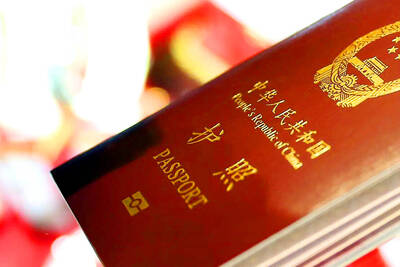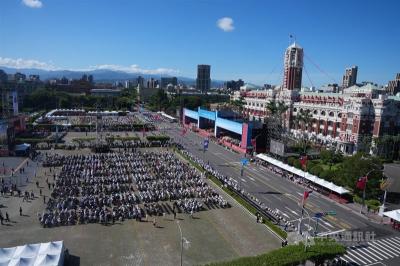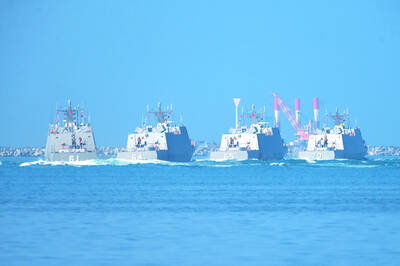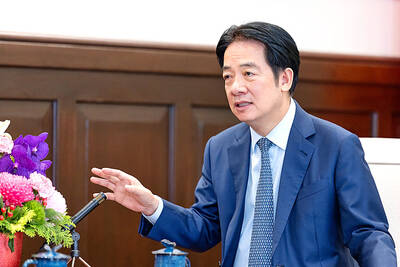Asia-Pacific nations are under pres-sure at an annual summit starting yesterday to consider a US-led drive for a huge free trade area stretching from China to Chile, but analysts question whether it would be feasible.
The Free Trade Area of the Asia Pacific, or FTAAP, would seek to harmonize a "noodle bowl" of bilateral and sub-regional agreements and offer an alternative to floundering global trade talks.
Advocates argue that it offers the best alternative liberalization vehicle in case the current Doha round of WTO talks collapses.
The Doha round on reducing global trade barriers has been deadlocked since July, mostly because of rows between the US, the EU and developing countries over agricultural subsidies.
"The FTAAP is an idea whose time is coming, if it has not already arrived," said Fred Bergsten, director of the Institute for International Economics in Washington.
A "fallback Plan B may become essential to keep the global trading system from relapsing into protectionism as the momentum of liberalization stalls," he wrote in a research paper.
The paper is part of a joint study by two respected business groups -- the APEC Business Advisory Council and the Pacific Economic Cooperation Council (PECC) -- on the feasibility of an APEC-wide free trade deal.
A report on the results of the study was obtained by reporters.
The US, the most influential member of APEC, is leading the push to study the feasibility of such a zone involving all 21 members.
US President George W. Bush may raise the issue during this weekend's leaders' summit in Hanoi, a Southeast Asian trade official said. But senior officials preparing for the summit said there has been opposition to the idea from countries like China.
While the FTAAP has certain attractive elements, the joint research paper concluded it was simply not politically feasible in the near term.
"The main reason for this assessment is that the political challenges of negotiating an FTAAP are so massive when placed against any likely political will," said Charles Morrison, PECC chairman and president of the Hawaii-based think tank East West Center.
Negotiating a free trade pact would need an overhaul of APEC processes, the business-backed study said. Commitments under the current APEC structure are voluntary, while a free trade agreement would be legally binding.
"Even before negotiations could begin, they would require major and controversial changes in APEC's '`ocial contract' which our studies indicate is likely to be resisted by a number of important member-economies," Morrison wrote.
Vinod Aggarwal, director of the APEC Study Center at the University of California, Berkeley, said protectionist interests arising from Washington's policy of selective liberalization could scuttle a cross-Pacific trade zone, with US industry likely to prefer the bilateral route.
Moreover, the growing US trade deficit with China is likely to render any regional free trade deal involving Beijing "dead on arrival in Congress for the foreseeable future," he said.
Bergsten, however, argued that while the leaders may not fully endorse the project this time, they should at least order an official study or exploratory discussion of the concept.
With APEC accounting for 60 percent of global economic output and half of world trade, the trade zone would be the single largest liberalization in history, Bergsten said.
He said agreeing to study the feasibility of an FTAAP could also act as a "credible political jolt" to non-APEC states, the EU, India and Brazil, forcing them to make new offers that would jumpstart the Doha round.
Bergsten said the proliferation of free trade pacts in East Asia -- which could evolve into a wider East Asia free trade zone -- threatened to "draw a line down the middle of the Pacific" amid similar trade groupings involving the US and Latin America.
This would "raise severe political and even security as well as economic problems for many countries in the region," he said.

The Ministry of the Interior (MOI) is to tighten rules for candidates running for public office, requiring them to declare that they do not hold a Chinese household registration or passport, and that they possess no other foreign citizenship. The requirement was set out in a draft amendment to the Enforcement Rules of the Public Officials Election and Recall Act (公職人員選舉罷免法 ) released by the ministry on Thursday. Under the proposal, candidates would need to make the declaration when submitting their registration forms, which would be published in the official election bulletin. The move follows the removal of several elected officials who were

The Republic of China (ROC) is celebrating its 114th Double Ten National Day today, featuring military parades and a variety of performances and speeches in front of the Presidential Office in Taipei. The Taiwan Taiko Association opened the celebrations with a 100-drummer performance, including young percussionists. As per tradition, an air force Mirage 2000 fighter jet flew over the Presidential Office as a part of the performance. The Honor Guards of the ROC and its marching band also heralded in a military parade. Students from Taichung's Shin Min High School then followed with a colorful performance using floral imagery to represent Taiwan's alternate name

FOUR DESIGNATED AREAS: Notices were issued for live-fire exercises in waters south and northwest of Penghu, northeast of Keelung and west of Kaohsiung, they said The military is planning three major annual exercises across the army, navy and air force this month, with the navy’s “Hai Chiang” (海強, “Sea Strong”) drills running from today through Thursday, the Ministry of National Defense said yesterday. The Hai Chiang exercise, which is to take place in waters surrounding Taiwan, would feature P-3C Orion maritime patrol aircraft and S-70C anti-submarine helicopters, the ministry said, adding that the drills aim to bolster the nation’s offshore defensive capabilities. China has intensified military and psychological pressure against Taiwan, repeatedly sending warplanes and vessels into areas near the nation’s air defense identification zone and across

COVETED PRIZE: The US president would be a peace prize laureate should he persuade Xi Jinping to abandon military aggression against Taiwan, William Lai said US President Donald Trump should get the Nobel Peace Prize should he be able to convince Chinese President Xi Jinping (習近平) to abandon the use of force against Taiwan, President William Lai (賴清德) told a conservative US radio show and podcast in an interview. The US is Taiwan’s most important international backer, despite the absence of formal ties, but since Trump took office earlier this year he has not announced any new arms sales to the nation. Trump could meet Xi at the APEC summit in South Korea on Oct. 31 and Nov. 1. Lai, speaking on The Clay Travis and Buck Sexton